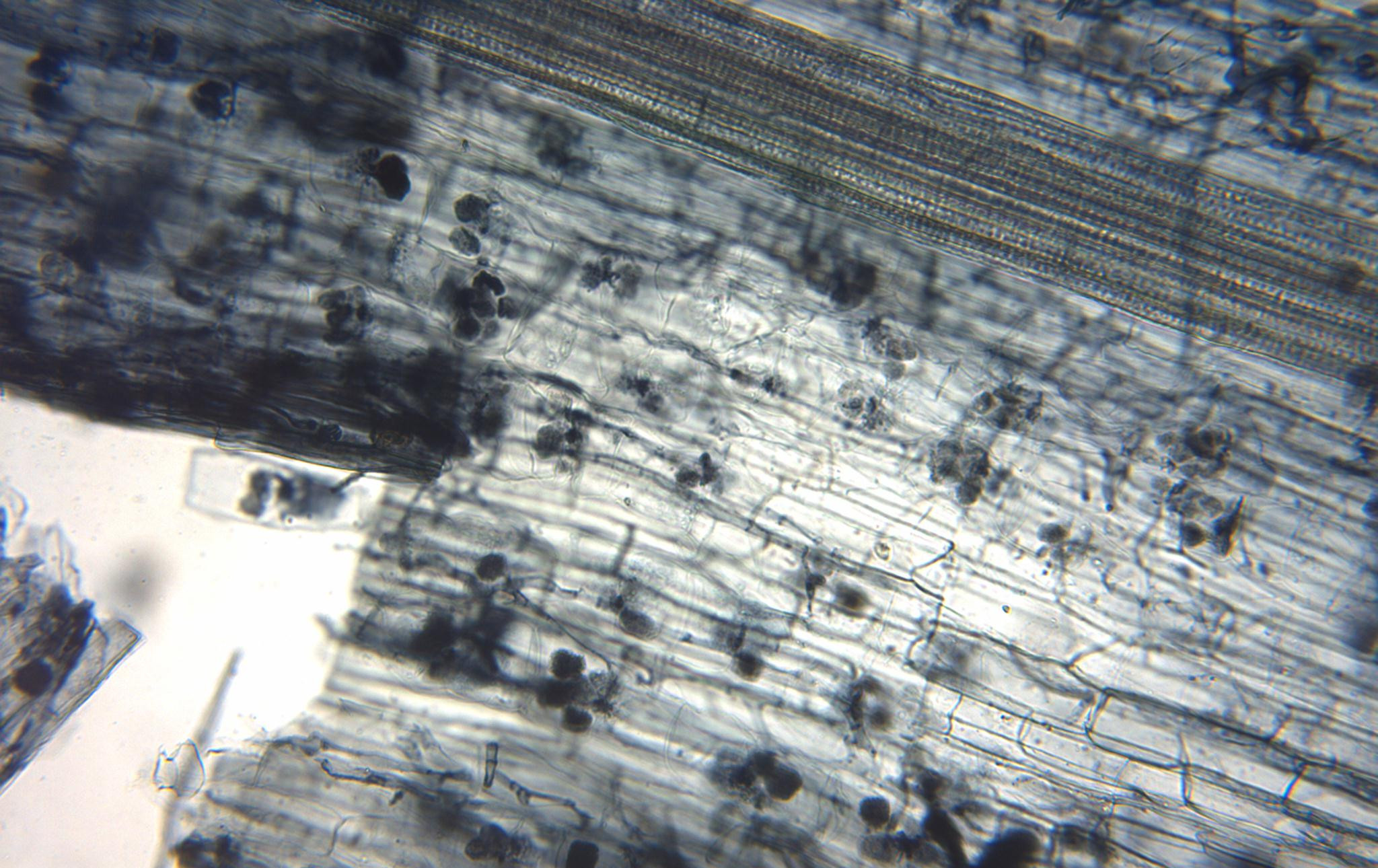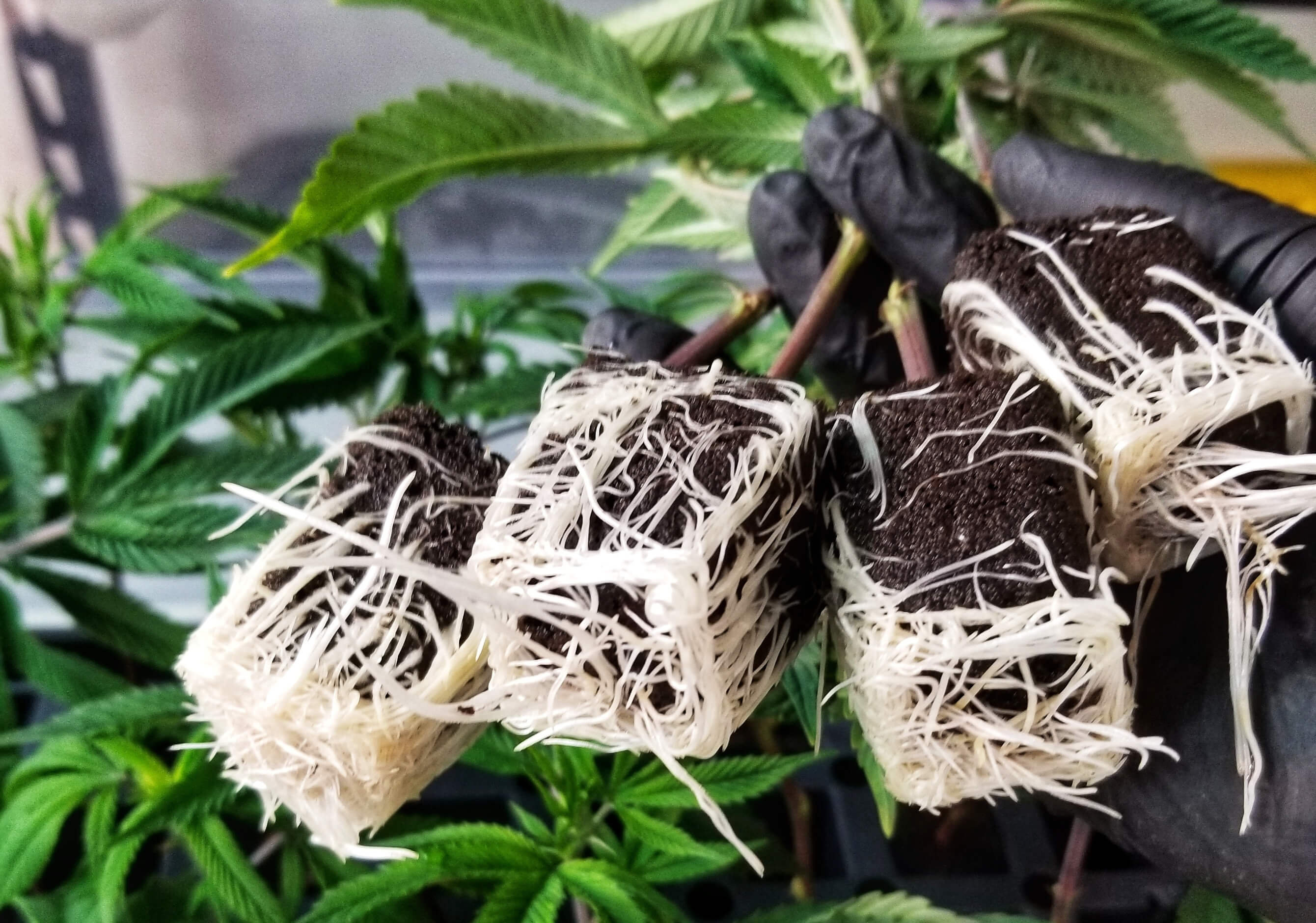- What Are Microbes?
- Benefits of Microbes
- Applying Microbes
- Feeding Microbes
What Are Microbes?
The use of inorganic or synthetic fertilizers is common among indoor cannabis cultivators, but it is not enough to apply nutrients to cannabis plants. Synthetic fertilizers are manufactured inorganic compounds including Ammonium Nitrate, Ammonium Phosphate, and Potassium Sulfate (Penhallegon, 2019). These sorts of fertilizers add nutrients to the grow medium, but unlike organic fertilizers, they do not provide organic matter to the grow medium for microbes. Microbes live within the grow medium whether its comprised of hydroponic or soil and live symbiotically with the cannabis plant to provide numerous benefits. It is possible to use synthetic fertilizers with mycorrhizal inoculant products as long as phosphorus levels are relatively low as the mycorrhizae colony builds up which can take weeks. In fact, soil microbes are so common that, “There are more microbes in a teaspoon of soil than there are people on the earth. Soils contain about 8 to 15 tons of bacteria, fungi, protozoa, nematodes, earthworms, and arthropods” (Hoorman, 2010).

Benefits of Microbes
In general, the combination of mycorrhizae, beneficial bacteria, trichoderma as well as other soil microbes provide plants with a stronger root system that is able to break down and absorb nutrients more efficiently while improving water uptake and retention. Trichoderma and mycorrhizae are a common pair of soil microbes that are beneficial to cannabis plants as well as beneficial bacteria and mycorrhizae. When pairing both trichoderma and mycorrhizae, be careful of exceedingly high levels of trichoderma compared to mycorrhizae as different trichoderma species can affect the percentage rate of mycorrhizal spore germination (Rodriguez, 2005). Trichoderma is another fungi that is commonly found in undisturbed soils, it has the ability to increase the uptake of a variety of nutrients for plants. Microbes can transform nitrogen from an inert gas to plant-usable forms and solubilize minerals to increase plant availability for certain nutrients.

Applying Microbes
When applying microbes to cannabis plants the most common methods are granular powders being applied directly to the roots during transplant and applying liquid mixes into the feed, especially during the vegetative phase for cannabis. It is especially important for mycorrhizae to make direct contact with the root system in order to sporulate and grow. After germination, the fungi relies on oxygen and plant sugars obtained from the plant’s roots to grow. As mycorrhizae grows from the root system it increases its surface area which allows the plant to better absorb nutrients and water from the soil. There are several different species of mycorrhizae, but experiments have shown that endo-mycorrhizal or arbuscular mycorrhizal is preferred by cannabis. Although cannabis prefers endo-mycorrhizal, it can form relationships with more than one type of mycorrhizae depending on the grow medium conditions (Citterio, 2005).
Feeding Microbes
Soil microbes consume organic matter specifically known as Soil Organic Matter (SOM) which is required in regular supply to keep microbes active. Plant nutrients and byproducts become food that allow them to survive and thrive. When using synthetic fertilizers it is common to add various sugars to provide additional food for microbes. As organic matter decomposes, it provides energy for soil microbes and supplies carbon. Soils and grow mediums in general are considered biologically active when they contain a healthy microbiome. Biologically active grow mediums are able to release more nutrients for plant growth when compared to biologically inactive grow mediums. When soil microbes are starved, they can go into a dormant state which is why it is important to continually add sugars to keep the microbes satiated (Wallenstein, 2017).
Even though one of the functions of mycorrhizae is phosphorus uptake, too much phosphorus present, will stop mycorrhizae from germinating. It is crucial to establish a good mycorrhizal colony before applying high phosphorus fertilizers that is common during the flowering phase. Besides phosphorus fertilizers, hydrogen peroxide and epsom salt are also considered harmful to mycorrhizae so keep that in mind when integrating microbes into your regimen.
Conclusion
Providing synthetic fertilizers to plants is not enough to allow them to thrive. Microbes should be present within the grow medium whether its hydroponic or soil and should be fed to keep them actively working to breakdown nutrients for plants to uptake and to improve water retention among other benefits. Without a healthy microbiome in the grow medium, nutrients are absorbed less effectively, and overall plant health decreases which can potentially increase the threat of pests colonizing your cannabis plants.
Comments powered by Talkyard.